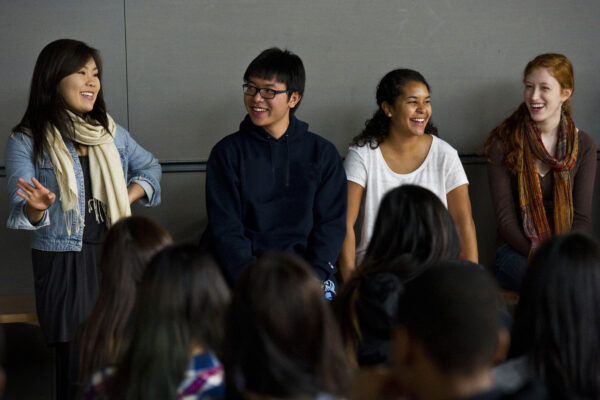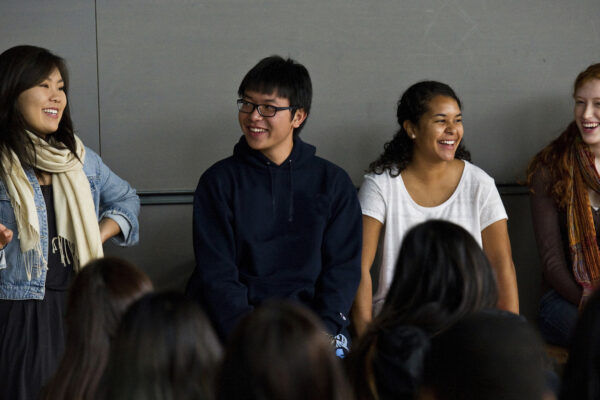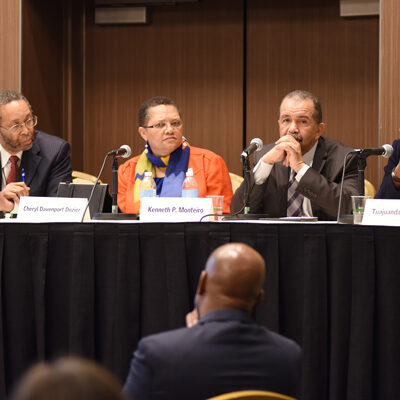ACE2018: Higher Education’s Diversity Journey Part II—Having Hard Conversations
By Jennifer Crandall
Moderated by Anne Clark Bartlett of the University of Washington-Tacoma, “Higher Education’s Diversity Journey Part II: Having Hard Conversations” provided ACE2018 participants a window into both the challenges and opportunities of critical incidents on campuses today.
In this interactive session, five Fellows from the 2017-18 cohort played the role of select higher education leadership, providing the various perspectives in having to manage the visit of a controversial speaker gone awry. Archie W. Ervin (Georgia Institute of Technology) and Lisa Guion Jones (University of Central Florida) followed with reflections on these perspectives based on their own expertise and experience.
The role-play offered key strategies campus leaders can apply in promoting an open, honest, and productive dialogue around critical incidents. Below is a sample of strategies for the five roles represented:
- Presidents: mission and vision should guide every aspect of response and campus events response team should be in place prior to incident
- Chief Diversity Officer: acknowledge what is happening and have community wide conversations about benefits and importance of free speech on campus
- Faculty Advisor: communicate clearly with students and other stakeholders at every stage, provide support to those who require it and document everything for future use
- Chair of Africana Studies: raise consciousness of campus as to why incident happened and highlight history of racism
- Campus Security: build relationships with campus community and local police force and train staff not only on crisis response but also on issues of cultural diversity/sensitivity
Non-role specific actions can further facilitate an institution’s effectiveness in responding to critical incidents on campus:
Initiate a safe form. Student organizations complete a safe form when planning for an event that might have risk associated with it. The form is signed by a faculty advisor and submitted in advance of the event; the event and potential risks are discussed with respective student groups.
Conduct tabletop exercises. Tabletop exercises with relevant stakeholders can ensure protocols are in place for managing campus incidents that can quickly and easily get out of control.
Build and maintain town/gown relationships. Relationships should be established relationships where meetings are held as necessary to share information and build trust. As the old adage goes, it is easier to call a friend than a stranger.
Know campus culture and climate. All campus leaders, from the president to faculty to staff, should be attuned to campus culture and climate.
While preparedness is key and guideposts are useful, the reality is that institutions cannot prepare for everything. Institutions need to be wary of magic bullets as institutional responses are context-pecific. Institutional type, location, and history matter.
If you have any questions or comments about this blog post, please contact us.


